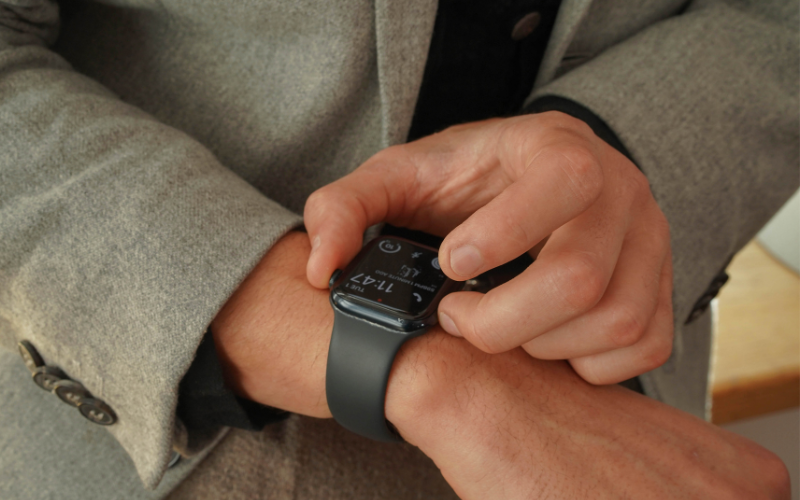How Virtual Reality Can Improve Diabetes Self-Management

Virtual reality (VR) offers an innovative approach to improving diabetes self-management routines. With advancements in computer power, especially in graphics and photorealism, various scenarios can now be artificially simulated. VR technology has proven highly effective in medicine, supporting tasks such as training doctors, assisting in surgeries, and creating new life-saving techniques. Common VR applications in healthcare include education, training, computer-assisted surgery, and radiotherapy.
But how can VR contribute to better diabetes care?
Diabetes is a rapidly growing global health issue. Between 2017 and 2045, the number of adults with diabetes is projected to rise from 424.9 million to 628.6 million, with around 80% of people with diabetes living in low- and middle-income countries where access to care can be limited. One potential solution to improve diabetes self-management and education is virtual reality.
A recent clinical trial indicated that online virtual worlds could promote diabetes self-management. Virtual reality can make these programs more practical and accessible, offering several benefits.
VR Provides an Immersive Educational Experience
Virtual reality creates an immersive learning environment that can enhance the understanding of diabetes management techniques and potential complications. This improved understanding may lead to better adherence to self-care practices.
Many instances of VR being used as an educational tool exist, such as virtual trips to history museums or reality-based labs. Similarly, VR can be tailored to diabetes care. For example, games designed as prototypes can teach healthy lifestyle habits or demonstrate the consequences of uncontrolled diabetes. These virtual scenarios can help individuals learn specific exercises or dietary choices to improve their condition.
In the medical field, VR, augmented reality (AR), and extended reality (XR) help prepare healthcare professionals for real-life practices. Some healthcare facilities have already integrated VR-based educational resources to transform medical education. One study evaluated the effectiveness of VR in training non-specialist clinicians to handle diabetes-related clinical situations. The results showed that VR training improved participants’ confidence and behaviors in managing diabetes emergencies, proving to be a valuable and well-received tool.
VR Simulates Real-Life Scenarios
VR technology can simulate real-life scenarios where individuals can practice and refine their diabetes self-management skills in a safe and controlled environment. For instance, users can learn how to administer insulin injections or interact with different food choices in realistic simulations. This hands-on approach increases confidence and competence in managing diabetes.
Medical simulations like OMS Medical offer realistic practice for assessing, diagnosing, and treating patients. These simulations can be beneficial for both experienced and novice medical practitioners, further demonstrating the usefulness of VR in medical training.
VR Facilitates Remote Monitoring and Telemedicine
Telemedicine has long been useful for managing diabetes, especially for individuals who travel frequently or work from home. The primary purpose of telemedicine is to transmit medical information, and VR has the potential to enhance this functionality.
In telemedicine, VR can provide an advanced communication interface, offering a more intuitive way to interact with information and allowing patients to feel a greater physical presence during virtual consultations. Over the past two decades, some telemedicine interventions have begun using VR platforms to deliver personalized clinical interventions or rehabilitation training remotely. VR also offers the ability to interact with sensory information from multiple sources and perform rehabilitation tasks in a more intuitive environment.
Currently, VR is being utilized in augmented or remote surgery and surgical training, where precise hand-eye coordination is critical. Researchers are also exploring virtual environments for medical visualization, assessment, and rehabilitation in fields like neuropsychology.
VR Offers Valuable Motivation
For many individuals, maintaining motivation to exercise regularly can be a challenge. A lack of enjoyment, negative feelings toward physical activity, and low motivation are common barriers. VR has the potential to improve motivation and enjoyment during exercise.
Gamification, for example, can make exercise more engaging. Users can set goals, overcome challenges, and visualize their progress, all while earning rewards like badges or points. These elements boost motivation and performance, making exercise more fun and rewarding.
VR Provides Emotional Support
Managing diabetes can be emotionally draining. It’s common to feel overwhelmed and exhausted while trying to keep glucose levels stable. Stress from work, home life, and the constant demands of diabetes management can lead to burnout.
For individuals seeking emotional support, virtual reality can enhance the experience of attending online support groups. VR support groups offer an immersive environment that can feel more comfortable and interactive than traditional online meetings. Virtual interactions mimic real-life encounters, providing a sense of presence that is impossible to achieve through phone or video calls.
For those in need of mental health support, VR-based therapeutic sessions can reduce stress and alleviate diabetes burnout, offering a valuable tool for both physical and emotional well-being.



